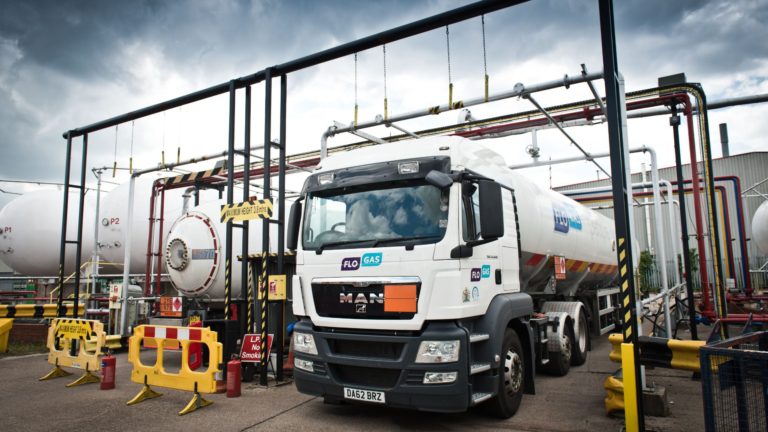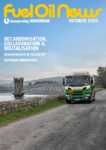
There are three topics that are being discussed a lot in our industry right now. They are decarbonisation, collaboration and digitalisation.
Not only are they being discussed a lot, but it is very rare for one to be mentioned without the other two; they are intrinsically linked. And they are not just topics of debate within our sector, they are also important in upstream and midstream as well as other industries and wider society too.
However, the focus is at its sharpest for the oil and gas sector, particularly in the run in to COP28, which is being held in the United Arab Emirates later this year.
Ahead of the conference, president-designate Dr. Sultan Al Jaber, has urged the oil and gas industry to create a new narrative about itself. He wants the sector to “take this opportunity to step up, flip the script and show the world once again how this industry is an important part of the solutions we need.”
But what does this mean, and how can you get involved?
Decarbonisation
Let’s start with decarbonisation – the key driver for all elements of this discussion. Across all industries, and all walks of life, people are looking at ways to decarbonise – both personally and professionally. Society is demanding it, and that demand is supported by new rules and laws from regulators and governments.
The oil and gas sector is at the centre of any calls for decarbonisation. In fact, a recent International Energy Agency (IEA) report – ‘Emissions from Oil and Gas Operations in Net Zero Transitions’ – highlighted the need for the sector to make immediate changes.
If pressure from industry bodies isn’t enough, there is also financial pressure from banks and investors who are under scrutiny to ensure their portfolio is as ‘green’ as possible, leaving them more reluctant to back oil and gas companies and projects. Earlier this year HSBC announced it would no longer fund fossil fuel projects.
What is decarbonisation?
Before asking what we can do, we first must understand what it is we’re trying to achieve.
Quite simply, decarbonisation is the removal or reduction of carbon dioxide (CO2) emissions. So, any action that reduces the amount of CO2 released can be considered decarbonisation.
Across the entire oil and gas sector, decarbonisation strategies include, among others, investment in renewable energy, adoption of cleaner refining technologies and development of low-carbon fuels as well as the development of technologies for carbon capture, utilisation, and storage (CCUS) to mitigate remaining emissions.
So, what can you do?
The first and most important thing is to do something. To start.
Starting means looking at methods that can reduce your business emissions and, once you have started, you need to assess progress. Decarbonisation is an ongoing process – constantly looking to reduce emissions. Once you have made reductions, you can measure those and develop ways to reduce still further, setting new targets. Decarbonisation is a process of constant improvement.
Why do it?
The key reason is that it is the right thing to do. Societal and regulatory pressures, mentioned above, are also good reasons. However, there are also direct financial benefits. Increasingly, your customers – and your customers’ customers – will start to define businesses by their green efforts as much as by their price or level of service. Highlighting decarbonisation efforts throughout the whole supply chain will soon be as important to a business as its prices. In fact, in some instances, it will be more important as customers become willing to pay more to support decarbonisation.
Collaboration
Collaboration is possibly the easiest to define of the three terms, but the hardest to truly understand or embrace. Quite simply, collaboration is about working together – a simple definition that hides lots of complexity.
Firstly, who we should be working with? Internally it will involve different groups, departments or P&L divisions and not worrying if the ‘P’ goes to them, or the ‘L’ comes to you. It is also about collaborating across companies, working together to create best practice for the industry and, even, across industries. On a macro scale, it is about working across nations with governments collaborating to affect global change.
But, even if we understand it, achieving it can be extremely difficult.
Collaboration will often involve cultural change within organisations. Most organisations, and by extension, most people within organisations, are not natural collaborators. They prefer to keep their ideas, knowledge and expertise to themselves, sharing or revealing just enough to get the task done.
True collaborations start from the opposite end of the scale – sharing everything to determine the best way to get the task done, or even to determine the true nature of the task.
Collaboration is possibly considered the easiest to solve, especially in the wake of COVID-19. During the pandemic we came together, as a global society, to work for the greater good. Wider society now expects us to be able to come together again, collaborating to solve the environmental issues that are facing us all.
Digitalisation
Digitalisation brings the other two aspects together. In many senses, digitalisation, in our modern society, is what makes both decarbonisation and collaboration possible as it provides the tools and methodologies.
For many the pandemic also made life more digital. When we couldn’t leave our homes, we used digital tools to communicate – all those Zoom calls, quizzes and get togethers – because that was the only way we could.
As a result, we are now far more aware of the digitalisation of life and work and, of course, digitalisation is not new to the oil and gas sector. Digital tools and practices, such as customer relationship management (CRM), resource planning and energy trade and risk management (ETRM), are common in the sector and have been joined, more recently, by the internet of things (IoT) and artificial intelligence (AI).
For the downstream sector, the key use of digitalisation has been in planning and optimising deliveries, delivering efficiencies that not only help to decarbonise, but also save time and money.
By bringing together data from different sources, such as the tachograph, flow metre and valve control from the driver, along with electronic proof of delivery – that also reduces the need for paperwork – and by combining it with back-office and tank telemetry systems, jobs and routes can be planned more efficiently. These digital tools increase the proficiency of the whole process.
A case in point
This is not abstract theory as Touchstar clients are already investing heavily in digitalisation.
A perfect example is the national energy supplier, Flogas. Flogas has sought to break down silos and promote collaboration across its supply chain. Previously relying on fixed delivery cycles or an algorithm that predicted when they were going to need gas, the company has now invested millions implementing tank telematic systems, providing regular readings of their customers’ consumption and tank levels. By obtaining this vital information in real-time, Flogas has been able to centralise its orders, meaning it can now draw volume at quieter times, outside of peak periods.
By investing in a computer-based scheduling system, Flogas is also able to implement seven-day, rolling scheduling, increasing visibility. Additionally, demand sensing enables Flogas to fulfil requests across its forecasting operations, while also taking a more detailed look at customer consumption to extrapolate three months of rolling forecast data.
The Fuelstar on-truck computing system, supplied by Touchstar, ties all this together. Scheduled routes go out to the driver and, when they complete a job, an invoice goes out in real-time. If Flogas doesn’t deliver on that day, it goes back to the order pot for immediate rescheduling.
This increased efficiency automatically delivers decarbonisation through fuel and resource savings as well as the significant benefits of going paperless. We estimate that our existing client base saves 83 million sheets of paper (the equivalent of 20,000 trees) simply by eliminating the hard copy POD and invoicing.
Unexpected benefits
In addition to decarbonisation other benefits include:
- Improved cash flow and better oversight of productivity levels
- Enhanced safety and easier-to-manage compliance
- Customisable tools and reliable data transmission
- Increased customer satisfaction
Decarbonisation will continue to be a key priority as societies and governments will demand it and embracing collaboration and digitalisation are key to delivering it. You may find yourself surprised at the additional benefits for your organisation.
Gordon Hyland has almost thirty years’ experience supporting customers with complex, field-based, technology solutions. He has been with Touchstar Group for six years and became head of the Fuels Division in 2019. In his spare time, he enjoys family life, and his main passions are travel and skiing whenever possible.
